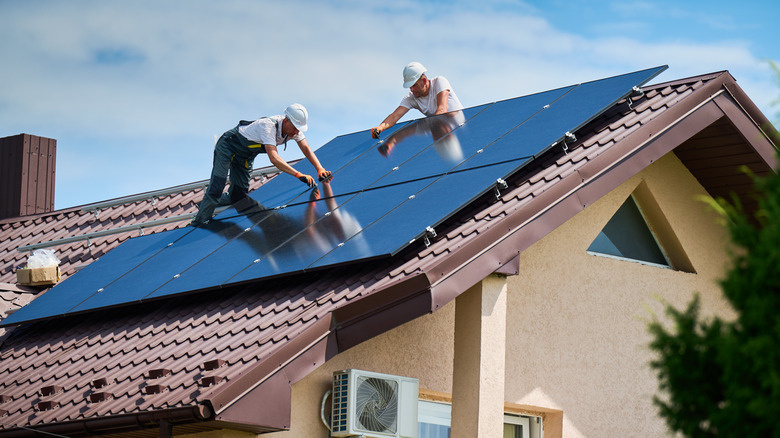Why You Should Think Twice About Using Thin-Film Solar Panels For Your Home
If you want to lower your utility bill and rely less on the grid, solar energy can seem like a smart move. Solar power technology has evolved over the years, but not all panels are built the same, and it's important to know your options. Thin-film solar panels may offer a sleek design with an easier setup, but there's more to know about them, and more to consider, than just looks and labor.
The negatives far outweigh the positives when using thin-film panels, and it begins with durability. Because of their thinner design, these panels are more prone to damage than their traditional and sturdier counterparts. They're also not as efficient, converting sunlight into electricity at an average of 8% or less overall. Because of this, you'd need a lot of them to actually power your home, and you may not have the room for them. This is why larger commercial properties with more space have an easier time justifying the use of thin-film solar panels, as they're just not a sensible option for homeowners.
They are more affordable than other solar power options, however, but that still doesn't mean you should take a chance on them. Considering you'd likely need to replace thin-film panels more often and the fact that your monthly power bill probably won't improve, means you'll end up spending more money long-term than you'll save up front.
Choosing the Right Solar Panel Matters for Both Budget and Efficiency
When it comes to using solar power for your home, the top choice on the market is monocrystalline. These solar panels aren't cheap, but they do boast a power output rating of up to 375 watts or more, making them the best in terms of overall capacity. They're also the most efficient, with a rating of up to 22%. Because of this, you won't need as many monocrystalline panels to meet your household's energy needs.
Polycrystalline is less expensive and a solid choice, but its efficiency rating usually doesn't exceed 17%. These panels aren't as effective as monocrystalline due to their construction, and their power output of 300 watts maximum reflects that. But while polycrystalline is the second tier option, it is widely used by homeowners, though monocrystalline is becoming a more preferred choice.
But solar powering can get pricey, as Consumer Affairs estimated in a May 2025 report that a small home system costs just over $14,000. However, that number does decrease to just under $10,000 once the federal solar tax credit, known as the Residential Clean Energy tax credit, is factored in.

